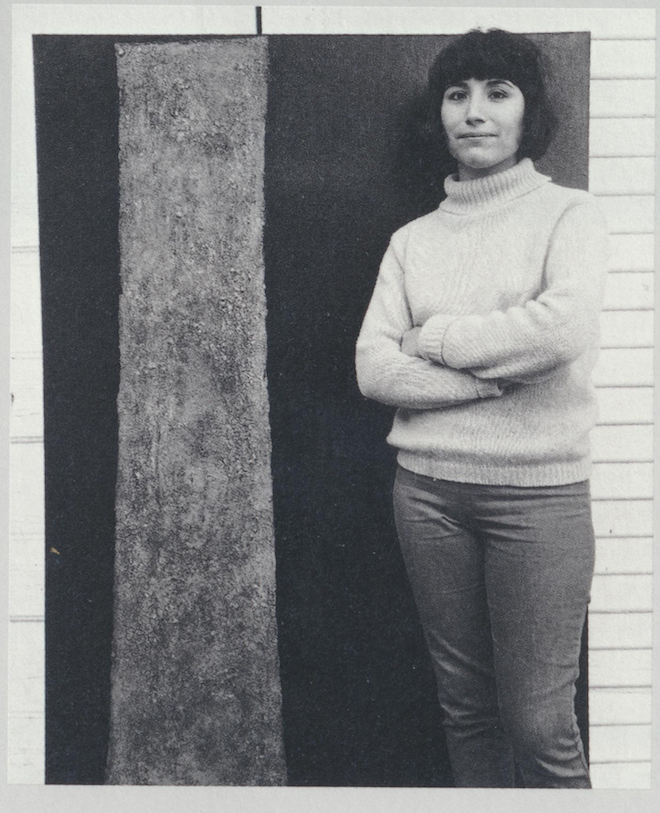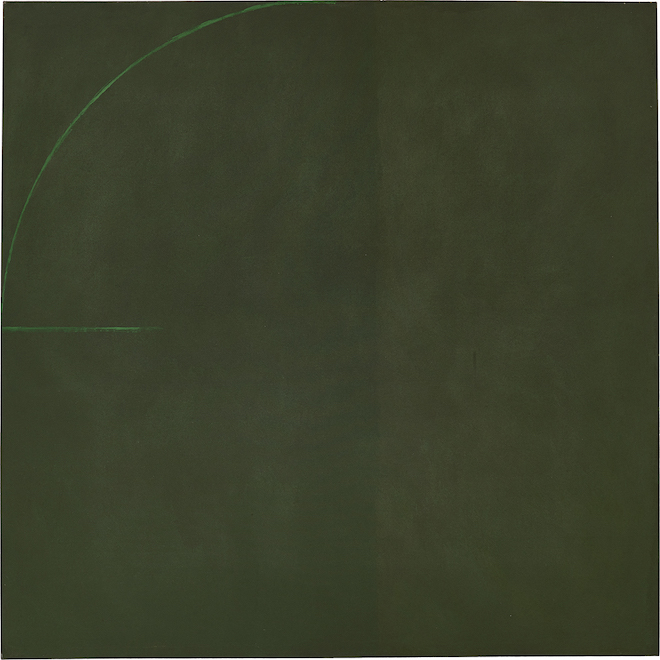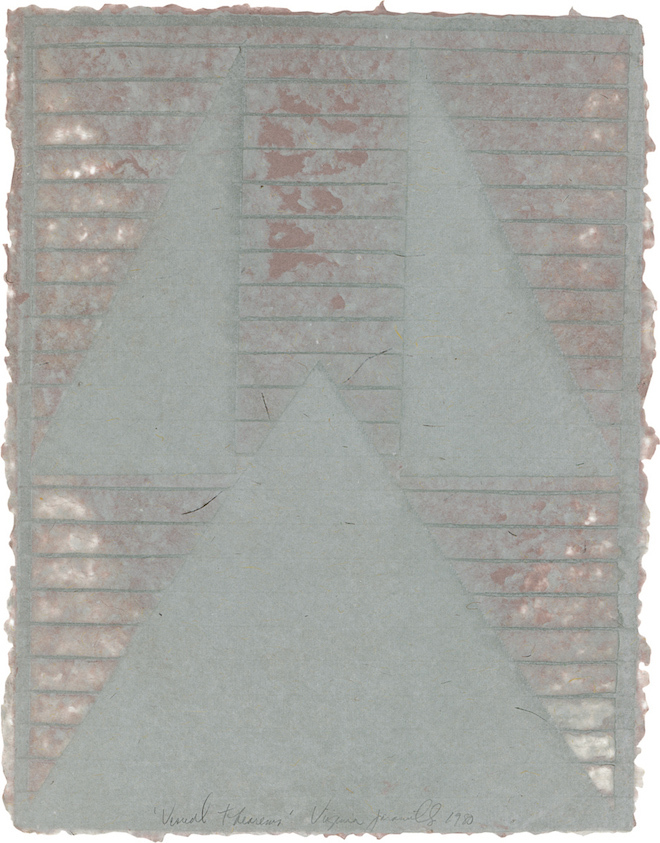From today Hales Gallery will play host to Virginia Jaramillo’s first solo exhibition outside of her native US. Entitled ‘Where the Heavens Touch the Earth’, the exhibition will display her work from the 1970s, which is striking in its underlying geometry. Bringing together a selection of large-scale canvases and the series Visual Theorems, the work crosses boundaries between painting and drawing, and canvas and paper, creating a tangible materiality.
Virginia Jaramillo’s career has spanned almost six decades. Born in El Paso, Texas, she spent her formative years in California, before living briefly in Europe and then relocating to New York City, where she still lives today. She is focused on expressing cultural constructs and sensory perceptions of space and time through her work, and draws inspiration from widely varied sources, including science fiction and Celtic and Greek mythologies. We spoke to Virginia about her work, New York in the 1970s, and her artistic influences.
The name of your exhibition “Where the Heavens Touch the Earth”, lends itself to the notion of boundaries and transcendence. Where does this title come from and how do these themes feed into your work?
The title stems directly from Teotihuacan, an ancient archeological site several miles outside present day Mexico City. Teotihuacan symbolizes and alludes to, “the place where the heavens touch the earth” and “the place where the gods were born.” This place, aligned so precisely with cardinal points and certain star systems, has played a large role in my work. Since childhood I’ve been fascinated and intrigued with why people and cultures believe what they do, and how their myths of creation are transformed into truths. What happened for this belief system to take hold?
How does your work play with the structural patterns we use to interpret the world and the flow of space and time?
My work is an aesthetic investigation of the sensory matrix we superimpose upon our environment, our lives, and our cultural myths, so we can comprehend and survive in the world around us. I believe that the fabric of time and space is inextricably interwoven into every civilization that has ever existed.
Your choice of materials has developed since your celebrated ‘Black Paintings’ that were made in California. What drove your selection of medium at that time?
The ‘Black Painting’ period was a time of extreme financial and political hardship, socially and artistically. If I wanted to paint, I had to use any material that was readily available at our neighborhood hardware store. I began preparing my own rabbit skin glue and gesso from scratch and using cheap black and dark brown paints that I grew to love. The journey with the black paintings, which began from a period of financial need, was a blessing in disguise for me as an artist. It gave me a voice.
Can you tell us about your year spent living in Europe in the 1960s, how was that formative for you?
California is a very special place, and its beauty had a tremendous effect on my formative years and still feeds my sensibilities as an artist. But coming straight from California, Europe, and specifically Paris, was an eye-opener. Europe was truly an alien planet. Everywhere I walked or looked, there was a sense of the historical, and I was present and a part of it. Everything was ‘art’; the food I ate, the shop windows, the paintings hanging in Le Louvre. It was a visual and sensory feast. After living in Europe, I never looked back. I knew I could never survive as a creative being in an art environment where so much was closed to minorities.
During your transition from West to East coast, how did your painting develop, and how did your relationship to abstraction shift?
I have always been concerned with abstraction. My involvement with a particular spatial construct allows me to look beyond the literal, which the canvas creates. It becomes deep sensory space.
Whilst in New York City in the 1970s and 80s, you were involved with various feminist organizations, including the celebrated Heresies Magazine and legendary A.I.R. Gallery. Can you discuss this moment for women artists and your place within it?
To be honest, at the time I was not as involved as many women artists of the period. Being married to a black artist, raising two children, being a Mexican-American woman artist, and squeezing in time to do my work was difficult. Dealing with the racial bias of the time could defeat anyone. My life was a political statement. During this period I worked with the staff of Heresies Magazine for their ‘Third World Women’ issue, which was very gratifying. Being on the board of advisors of ‘The Feminist Art Institute’, and helping to organize a successful benefit auction for a scholarship fund for women artists is something I’m very proud of. As is being part of ‘Women Artists of the 80’s’ at A.I.R. Gallery in New York City, which was curated by Corinne Robins.
This will be your first solo exhibition outside of the US. What’s next?
I’m excited to be participating in two major museum shows later in the year; ‘We Wanted a Revolution: Black Radical Women 1965-85’ at The Brooklyn Museum in New York and ‘Soul of a Nation: Art in the Age of Black Power’ at the Tate Modern. In May, Hales Gallery will feature several of my Curvilinear paintings from the 1970s in the Spotlight section of Frieze New York art fair.
Virginia Jaramillo: Where the Heavens Touch the Earth, will be on display at Hales Gallery between 20th January and 4th March 2017.






 Twitter
Twitter
 Tumblr
Tumblr
 YouTube
YouTube
 Facebook
Facebook
 Instagram
Instagram
